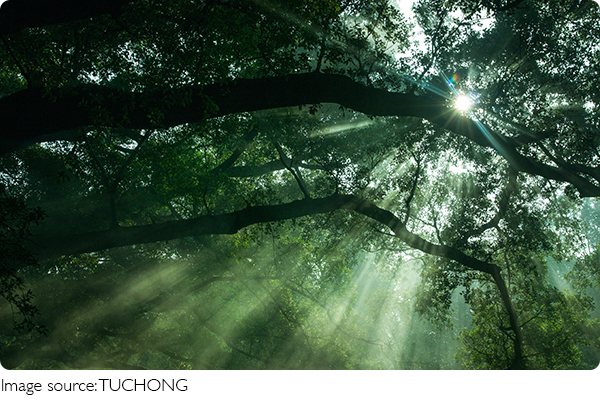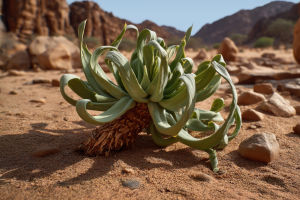Plant Breathing Basics

Have you ever wondered if plants breathe like we do? We often hear about how plants take in carbon dioxide and release oxygen, but there's more to the story.
While photosynthesis gets all the attention, plant respiration is the essential behind-the-scenes process that keeps a plant alive 24/7.
Without it, a plant wouldn't be able to grow, repair itself, or function. In this article, we'll explore what plant respiration is, how it differs from photosynthesis, and why it matters for the entire ecosystem—including you.
What Is Plant Respiration?
Plant respiration is a process in which plants break down sugars (mainly glucose) to release energy for their cells. This energy fuels everything the plant does: growing roots, producing flowers, and even defending itself from pests. It's similar to how humans and animals extract energy from food.
The basic equation of cellular respiration in plants is:
Glucose + Oxygen → Carbon dioxide + Water + Energy (ATP)
This may look familiar—it's the reverse of photosynthesis! While photosynthesis builds glucose using sunlight, respiration uses that glucose to release stored energy.
Where Does Plant Respiration Happen?
Respiration takes place in every living cell of the plant, including those in the roots, stems, and leaves. The main site of respiration is a structure inside the cells called the mitochondrion—often referred to as the "powerhouse" of the cell. These organelles convert glucose into ATP (adenosine triphosphate), the molecule plants use to do work.
Unlike photosynthesis, which is limited to chloroplasts and only occurs in the presence of light, respiration happens all the time—day and night.
Why Do Plants Need to Respire?
Photosynthesis may make food, but respiration is what allows plants to use that food. Here's why respiration is vital:
• Growth: Cells divide and expand using energy from respiration.
• Repair: Damaged tissues need energy to heal.
• Transport: Moving water, minerals, and nutrients through the plant takes energy.
• Defense: Producing protective chemicals against insects and diseases also depends on respiration.
Without this constant supply of energy, even the greenest plant wouldn't survive long.
How Is It Different from Photosynthesis?
It’s easy to confuse photosynthesis and respiration, but they’re actually opposite processes with very different purposes.
Photosynthesis
Happens in chloroplasts (only in green plant cells)
Requires sunlight, carbon dioxide, and water
Produces oxygen and glucose
Occurs only during daylight
Purpose: to make food for the plant
Respiration
Happens in mitochondria (in all living plant cells)
Requires glucose and oxygen
Produces carbon dioxide, water, and energy (ATP)
Occurs both day and night
Purpose: to release energy from food
In short: Photosynthesis builds energy-rich molecules, and respiration breaks them down to release energy—working together to keep the plant in balance.
Do All Plants Respire the Same Way?
Yes, nearly all plants follow a basic aerobic respiration process, using oxygen to break down glucose. However, under certain conditions, like low oxygen levels in waterlogged soil, some plants can switch to anaerobic respiration. This alternative method produces less energy and sometimes harmful byproducts like ethanol, but it allows the plant to survive temporarily until normal conditions return.
What Happens at Night?
At night, photosynthesis stops because there's no sunlight, but respiration continues. This is why plants take in oxygen and release carbon dioxide during the night. Some people mistakenly think plants don't need oxygen—but they absolutely do!
In greenhouses or closed spaces with many plants, oxygen levels can slightly drop at night due to ongoing respiration. However, this effect is small and not dangerous in most cases.
How Does Respiration Affect the Environment?
Plant respiration plays a crucial role in the carbon cycle. While photosynthesis removes carbon dioxide from the air, respiration returns some of it back, ensuring a balanced system. Together, these two processes help regulate global carbon levels and maintain the health of ecosystems.
In forests, for example, the balance between photosynthesis and respiration determines whether the forest is absorbing carbon or releasing it—important information for climate scientists tracking carbon emissions.

Is Respiration Always Constant?
The rate of respiration can vary based on:
• Temperature: Higher temperatures speed up chemical reactions, increasing respiration.
• Oxygen levels: More oxygen allows for more efficient respiration.
• Glucose availability: If a plant has made a lot of sugar during the day, respiration may increase at night.
• Age of plant: Young, fast-growing plants typically have a higher respiration rate than mature ones.
Farmers and gardeners monitor these conditions to help plants grow better and faster.
Do Seeds Respire Too?
Absolutely! Even though they may look inactive, seeds are alive and undergoing slow respiration. As soon as a seed starts to germinate, its respiration rate increases significantly. It begins using its stored nutrients to grow roots and shoots.
That's why soaking or warming seeds can help "wake them up"—it triggers faster respiration and speeds up germination.
What Can We Learn from Plant Respiration?
Understanding how plants manage energy teaches us not just about biology, but also about sustainability. Researchers are using knowledge from plant respiration to explore bioenergy, crop improvements, and even space farming where energy management is critical.
According to a 2022 article in Plant Physiology, scientists are studying how modifying respiration genes in crops can improve growth and drought resistance—something essential in a changing climate.
Take a Breath—for the Plants!
So next time you admire a blooming flower or a tall tree, remember that it's not just sunlight that keeps it alive. Deep inside every cell, respiration is quietly at work, fueling growth, strength, and survival. Just like you breathe to live, so do plants—in their own special way.
Do you grow houseplants or garden outside? Try observing how your plants behave during different times of the day—you'll begin to notice how respiration and photosynthesis dance in perfect rhythm. Plants may not sigh or yawn, but their breath keeps the world alive.
-
 Rocky Desert SurvivorGet Up Close with the 2,000-Year-Old Plant Thriving in Harsh Rocky Deserts!
Rocky Desert SurvivorGet Up Close with the 2,000-Year-Old Plant Thriving in Harsh Rocky Deserts! -
 Blue Orchid BlissUnveil the Stunning Blue Orchid That Fills Your Home with Rare Beauty, Elegant Blooms, and Irresistible Fragrance!
Blue Orchid BlissUnveil the Stunning Blue Orchid That Fills Your Home with Rare Beauty, Elegant Blooms, and Irresistible Fragrance! -
 Shy BloomUp Close with the "Shy Bloom": See the Secret Details of Mimosa pudica Flowers Like Never Before!
Shy BloomUp Close with the "Shy Bloom": See the Secret Details of Mimosa pudica Flowers Like Never Before!